On May 2017 I will take part as visiting fellow and magician to Mesmerized!, a series of events hosted by the University of Warwick. The events will take the practice of mesmerism as their point of departure, to explore themes of deception, belief, and enchantment and will bring together Warwick researchers interested in those themes, providing opportunities for interdisciplinary exchange.
The complete program is available here (1)
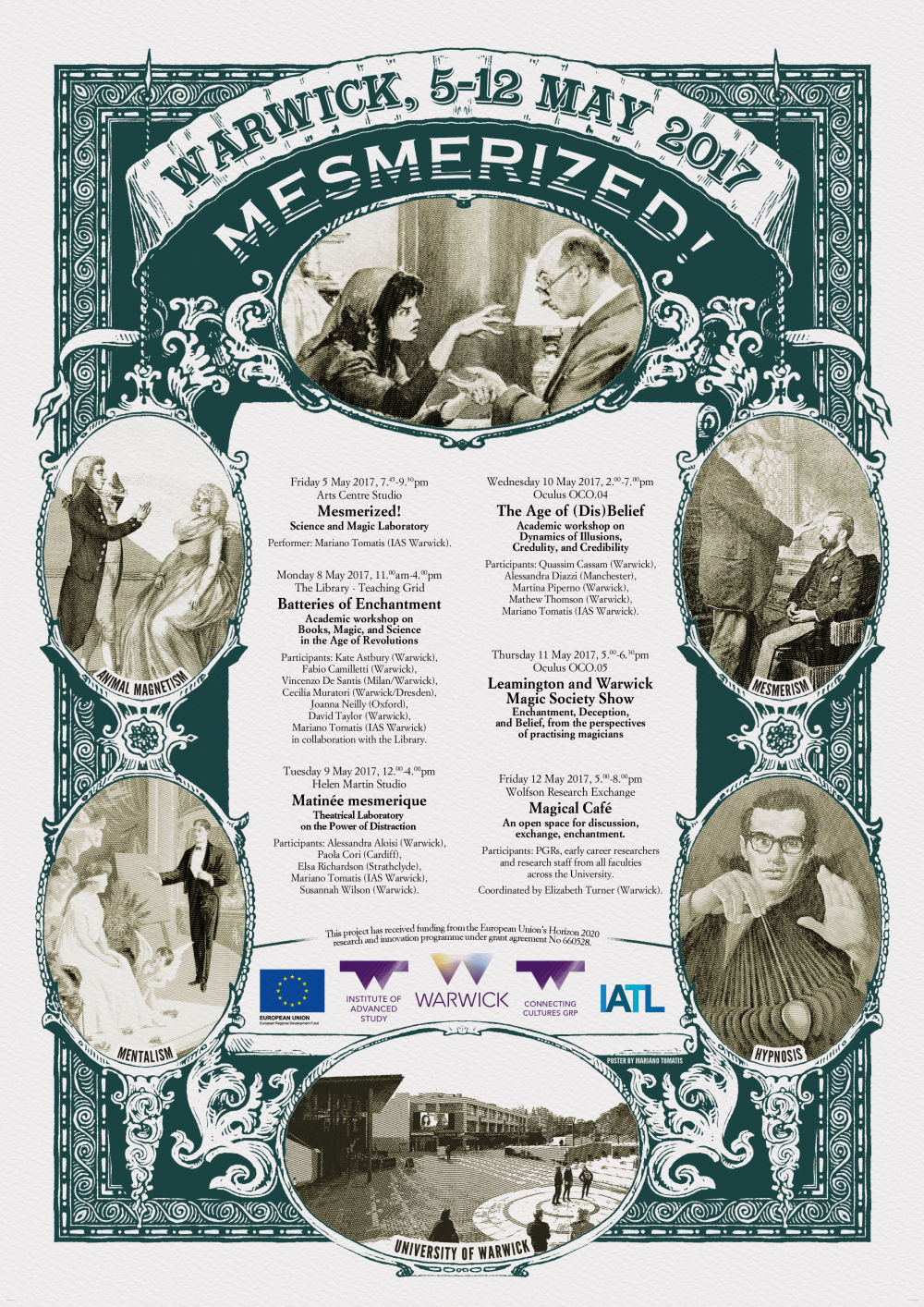
I am also the art director of the event. My talks are listed here.

Even in its very name, the cultural project of the Enlightenment is often defined through references to the semantic sphere of light: “illuminer”, “rayonner”, “éclairer”. In spite of this intellectual, cultural, and even political agenda, 18th-century Europe is also the golden age of charlatans, magicians, and necromancers of various kinds. “Magnetism” is the password granting the access to the Otherworld. In the streets, but also in the rooms of aristocratic or royal palaces, conjurers exploit the magnetic properties of stones in ingenious ways; Pinetti’s automata seem to possess a conscious mind; Cagliostro manipulates magic mirrors, Étienne-Gaspard Robertson creates projections of ghosts, and Franz Anton Mesmer even postulates the existence of an “animal magnetism”. Long before nowadays’ discussions on “post-truth”, newspapers and the public debate vehemently discuss the nature of reality, opposed to illusion, enchantment, and belief: when witnessing such amazing phenomena, can we still trace a line between fact and fiction?
Mariano Tomatis’ lecture-show brings back to life the scientists and magicians of the 18th century through their objects, their stories, and their tricks, focusing on the way their shadow still haunts contemporary ideas. “Mesmerized!” re-stages an authentic 18th-century demonstration in amusing physics, intertwined with an analysis of the rhetorical and mechanical techniques “behind the curtains”. Among talking skulls and magic lanterns, X-ray glasses and rising cards, you will take part in a learned and amazing journey into the dark side of Enlightenment.
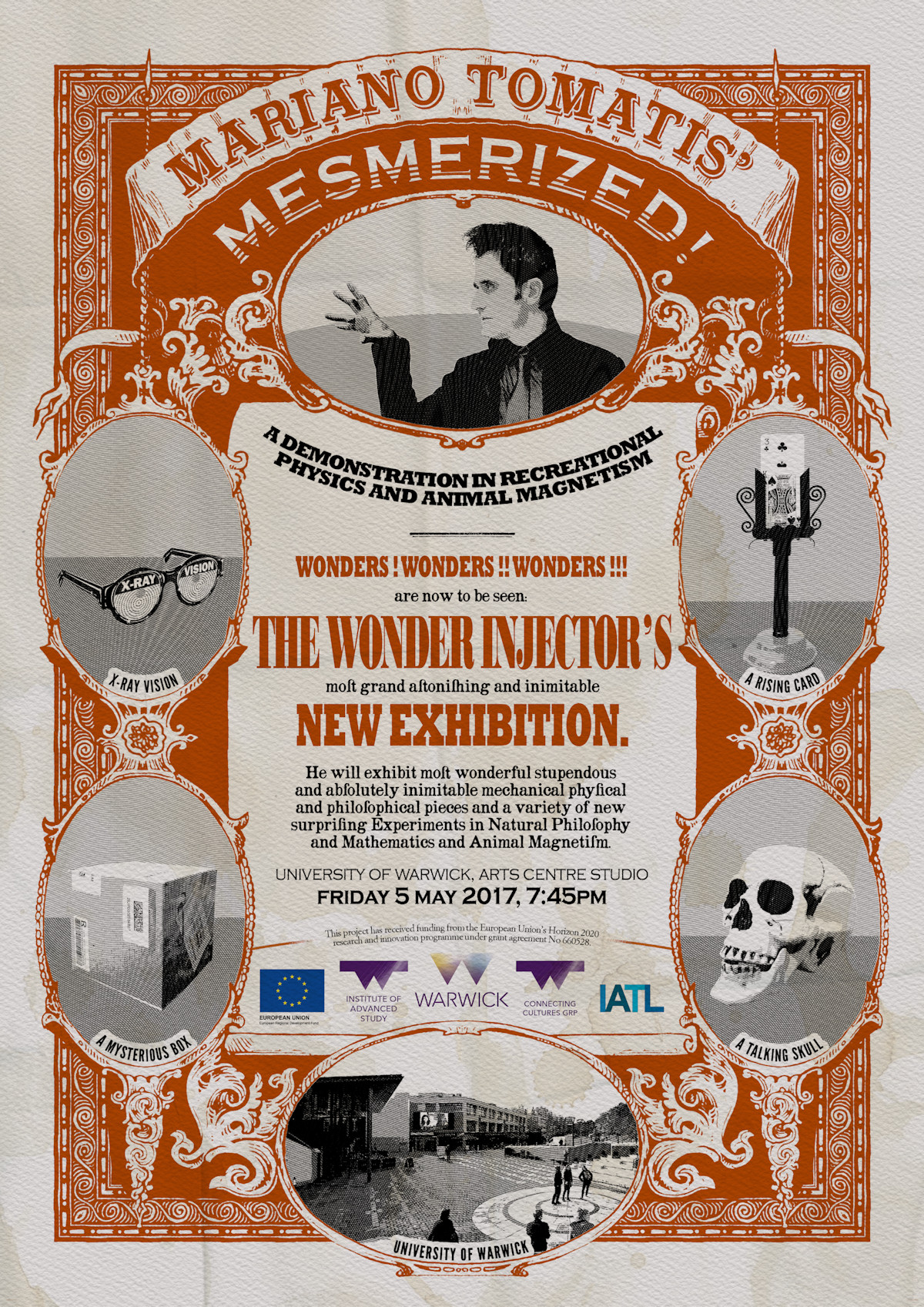
Art design by Mariano Tomatis

“Magic Experience Design” is the practice of designing and developing experiences which may be described as impossible, surprising, unexpected, extraordinary–all that we usually label with the word “magic.” In 1829 Eusèbe B. de Salverte publishes On the Occult Science, an attempt to retrace the history of Science from this perspective: the miracles of the Bible and the legends and prodigies of the ancient mythology are submitted to a rigorous analysis with the goal of referring them to natural causes and to the activities of magic experience designers. Friedrich Schiller’s The Ghost-Seer (1787) plays a similar role, explaining how the Count of Cagliostro performs seemingly incredible paranormal feats. Even though it is a book of fiction, the German gothic novel is engaged in a dialogue with other contemporary nonfiction books and together they offer a vivid portrait of the multilayered deceptions performed by magicians and necromancers.
The concept of “Magic Experience Design”, the dialogue between fiction and nonfiction books and the shift of magic from page to stage (and viceversa) will be explored with an interdisciplinary approach, making use of electronic instruments, shared web libraries and advanced principles of database management and data linkage, providing a model for further investigations on this and related topics.
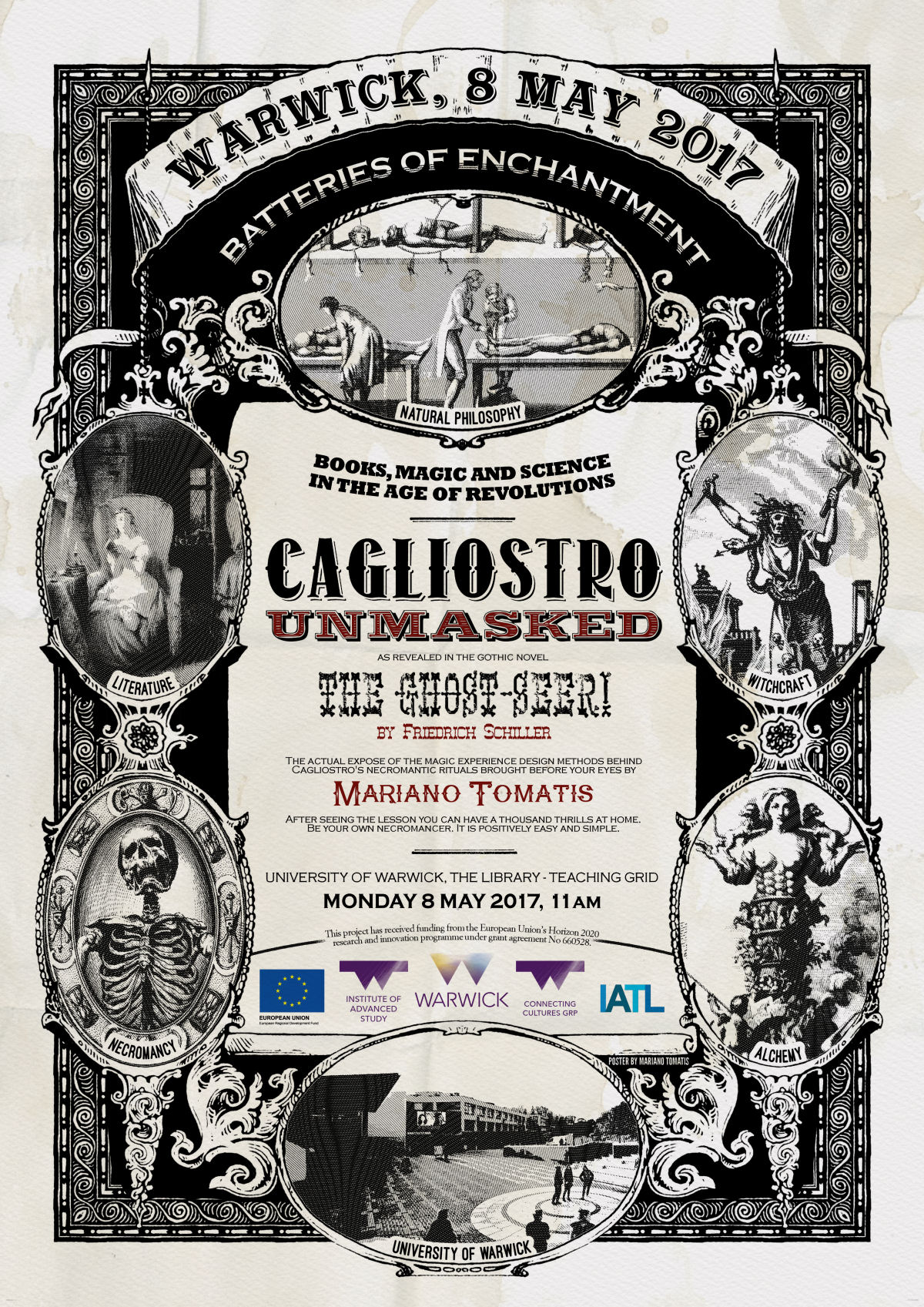
Art design by Mariano Tomatis

In the second half of the 19th century, the word “Mesmerism” appeared in theatre programmes, offered as a form of entertainment for an educated audience. However, Franz Anton Mesmer’s doctrine was born with therapeutic purposes. Its progression from medicine to stage magic followed a twisted path where imagination, subjection, seemingly paranormal phenomena, tricks and deception are inextricably linked. From Franziska Öesterlin’s psychic perceptions to Magdeleine’s “sixth sense”, from the epigastric sight of Petetin’s somnambulist to Giuseppina Sisti’s eyeless vision, the laboratory will give a brief overview of the history of Mesmerism and the key role of women from the point of view of a secular magician. During the lecture, an actual somnambulist will give a live performance of extraordinary feats of clairvoyance and the audience will take part in the show, reviving a typical 18th-century demonstration of “animal magnetism” and experiencing the power of distraction.
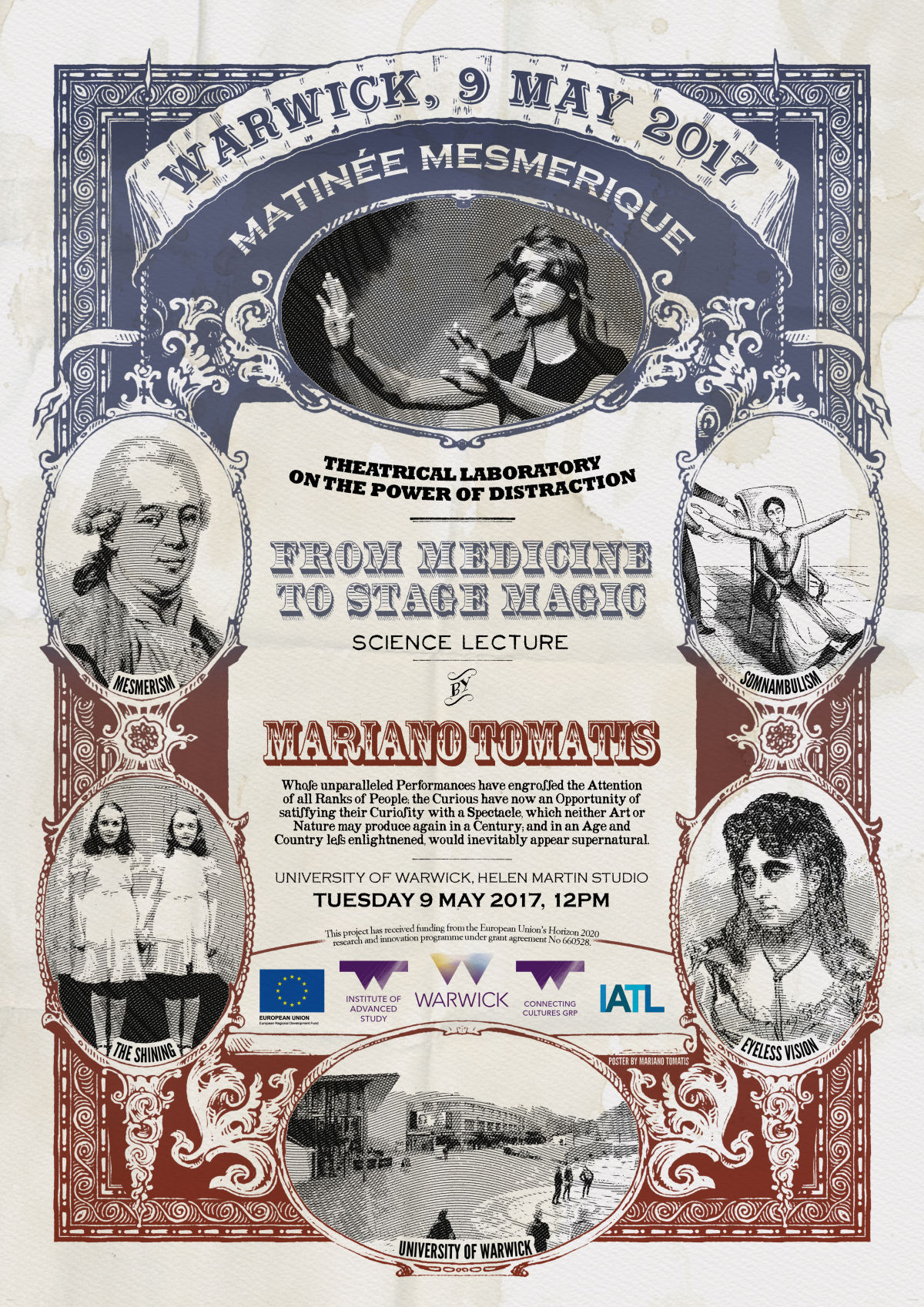
Art design by Mariano Tomatis
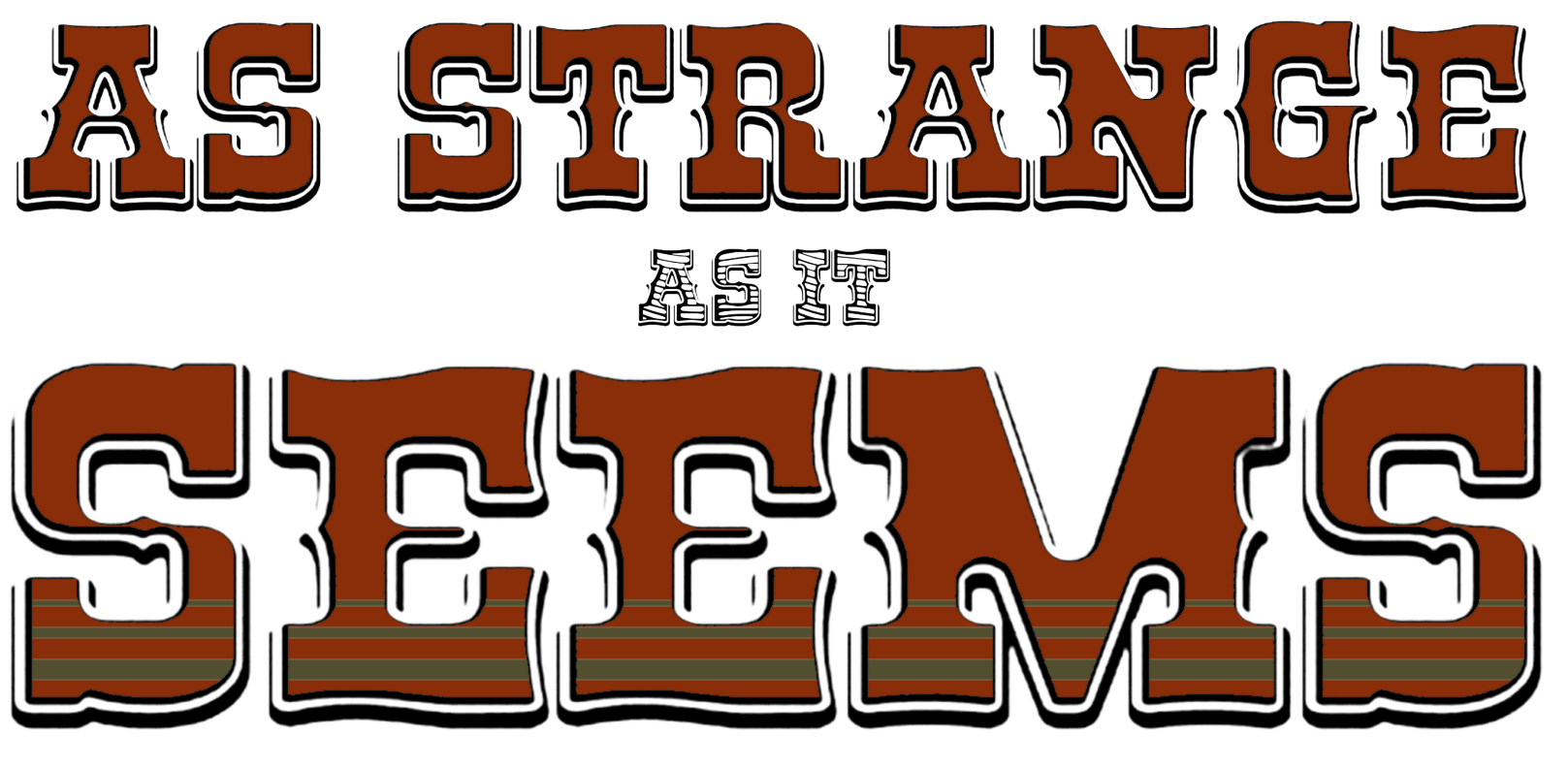
In the spirit of Enlightenment, 18th-century scientists tend to associate the concept of Enchantment with the superstitions of organized religions and the dogmatic authority of monarchical rule: the main goal for the Reason is to free individuals from being enthralled by such enchantments. Nevertheless, during the French Revolution, some masters of deception challenge the marginalization of mystery staging elaborate performances intended to evoke puzzlement and to keep minds in check. At the turn of the century, the Belgian magician Gaspard Etienne Robertson is the most successful one. The magic tricks, the anecdotes and the scams collected in his autobiography provide an interesting account of the mindset of that age, regarding the topics of illusion, credulity and credibility. During the lecture Mariano Tomatis cherrypicks five stories from Robertson’s Memoires, each one casting a light on the weirdest aspects of “The Age of (Dis)Belief”.
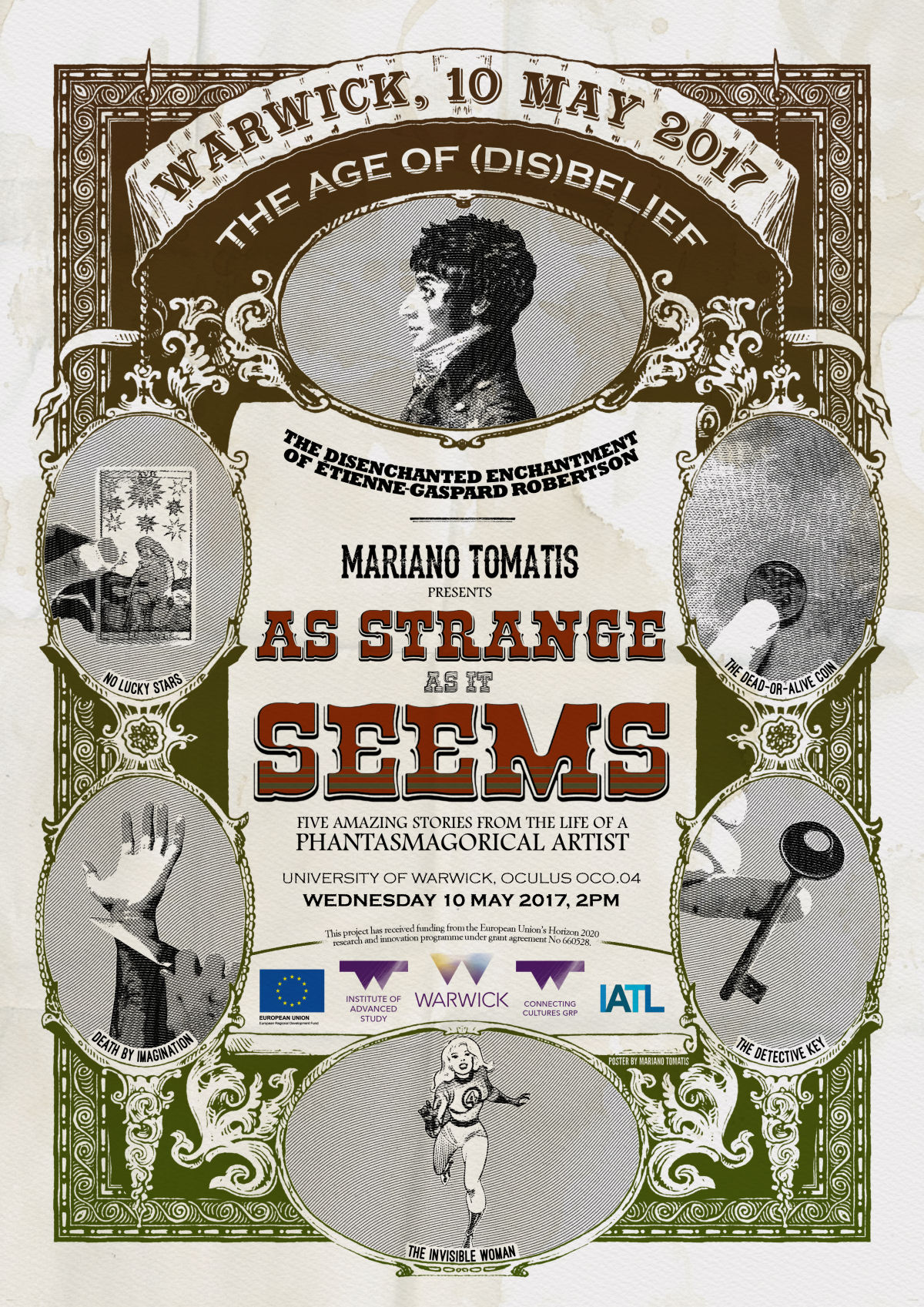
Art design by Mariano Tomatis
Short speech in the behalf of the “Academic Careers and Employability” meeting.
1. Event organized by Fabio Camilletti, Elizabeth Turner, Alessandra Aloisi, and Martina Piperno.
BY-NC-SA 4.0 • Attribution-NonCommercial-ShareAlike 4.0 International